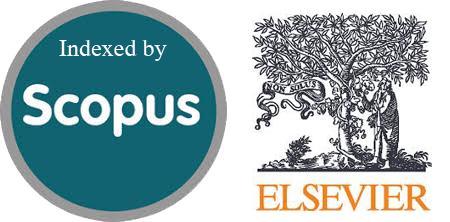Comprehensive Molecular Profiling of the 3′UTR Region of the CEBPA Gene in Iraqi Patients with Acute Myeloid Leukemia Reveals Novel Regulatory Variants
DOI:
https://doi.org/10.54133/ajms.v9i1.2112Keywords:
AML patient, CEBPA gene, Novel SNPs, Sanger sequencingAbstract
Background: Acute myeloid leukemia (AML) is a genetically heterogeneous leukemia characterized by abnormal myeloid blast accumulation, disrupting normal hematopoiesis and leading to rapid progression. Objective: To investigate SNPs within the 3’UTR of the CCAAT/enhancer-binding protein alpha (CEBPA) gene and its association with AML in Iraqi patients. Methods: The study was carried out on 120 AML patients classified into newly diagnosed, induction chemotherapy, and consolidation chemotherapy stages (40 each), and 40 individuals as a control group. Genomic DNA was extracted from AML patients and controls, followed by PCR amplification and Sanger sequencing of the 3’UTR region of the CEBPA gene. The AML patients were characterized by age, sex, FMS-like tyrosine kinase 3 internal tandem duplication (FLT3-ITD), Nucleophosmin1 (NPM1) mutations, the French-American-British classification (FAB), and the World Health Organization (WHO). Results: The results revealed significant age differences among AML subgroups and notable hematological abnormalities, including reduced hemoglobin and platelet levels. According to the WHO classification, PML-RARA emerged as the most frequent fusion transcript. Based on FAB classification, M3 was the most common, followed by M4 and M0. The NPM1 mutations were more common than FLT3-ITD. The sequencing of the CEBPA 3′UTR region identified 83 variants, including 46 novel ones, 14 new forms of known SNPs, and 23 registered SNPs, reflecting substantial regulatory heterogeneity in this non-coding region. Conclusions: The CEBPA 3′UTR mutations reveal considerable genetic diversity among Iraqi AML patients, suggesting a potential regulatory role.
Downloads
References
De-Morgan A, Meggendorfer M, Haferlach C, Shlush L. Male predominance in AML is associated with specific preleukemic mutations. Leukemia. 2021;35(3):867–870. doi: 10.1038/s41375-020-0935-5. DOI: https://doi.org/10.1038/s41375-020-0935-5
Ahn JS, Kim HJ. FLT3 mutations in acute myeloid leukemia: a review focusing on clinically applicable drugs. Blood Res. 2022;57(S1):32–36. doi: 10.5045/br.2022.2022017. DOI: https://doi.org/10.5045/br.2022.2022017
Story BA. Tracing the transformation of hematopoietic stem cells into leukemic cells using single-cell multi-omics. ETH Zurich. PhD Thesis, 2021. doi:10.3929/ethz-b-000512056
Chen W, Wang H, Hu J. Incidence of myelosuppression in AML is higher compared with that in ALL. Mol Clin Oncol. 2024;21(6):95. doi: 10.3892/mco.2024.2793. DOI: https://doi.org/10.3892/mco.2024.2793
Bain BJ, Béné MC. Morphological and immunophenotypic clues to the WHO categories of acute myeloid leukaemia. Acta Haematol. 2019;141(4):232–244. doi: 10.1159/000496097. DOI: https://doi.org/10.1159/000496097
Voso MT, De Bellis E, Ottone T. Diagnosis and classification of AML: WHO 2016. In: Acute Myeloid Leukemia. Springer; 2021. p. 23–54. doi: 10.1007/978-3-030-72676-8_2. DOI: https://doi.org/10.1007/978-3-030-72676-8_2
Ayub RH, Ibraheem AH. Evaluation of related flow cytometry parameters with FAB subtype of acute myeloid leukemia associated with histological assessment. Samarra J Pure Appl Sci. 2020;2(3):84–94. doi: 10.54153/sjpas.2020.v2i3.126. DOI: https://doi.org/10.54153/sjpas.2020.v2i3.126
Akabari R, Qin D, Hussaini M. Technological advances: CEBPA and FLT3 internal tandem duplication mutations can be reliably detected by next generation sequencing. Genes (Basel). 2022;13(4):630. doi: 10.3390/genes13040630. DOI: https://doi.org/10.3390/genes13040630
Ali AM, Salih GF. Molecular and clinical significance of FLT3, NPM1, DNMT3A and TP53 mutations in acute myeloid leukemia patients. Mol Biol Rep. 2023;50(10):8035–8048. doi: 10.1007/s11033-023-08680-2. DOI: https://doi.org/10.1007/s11033-023-08680-2
de la Torre E, Serrano J, Martínez-Cuadrón D, Torres L, Sargas C, Ayala R, et al. Validation of mutated CEBPA BZIP as a distinct prognosis entity in acute myeloid leukemia: a study by the Spanish PETHEMA registry. Haematologica. 2024;18;109(8):2682–2687. doi: 10.3324/haematol.2023.284601. DOI: https://doi.org/10.3324/haematol.2023.284601
Rivera JC, Nuñez D, Millar E, Ramirez K, Chandía M, Aguayo C. Mutations in the bZip region of the CEBPA gene: A novel prognostic factor in patients with acute myeloid leukemia. Int J Lab Hematol. 2023. doi: 10.1111/ijlh.14157. DOI: https://doi.org/10.1111/ijlh.14157
Tien FM, Hou HA. CEBPA mutations in acute myeloid leukemia: implications in risk stratification and treatment. Int J Hematol. 2024;1–7. doi: 10.1007/s12185-024-03625-3. DOI: https://doi.org/10.1007/s12185-024-03773-5
Bullinger L. CEBPA mutations in AML: site matters. Blood. 2022;139(1):6–7. doi: 10.1182/blood.2021013557. DOI: https://doi.org/10.1182/blood.2021013557
Yener E, Ozcan K, Öngören Ş, Salihoğlu A, Demiröz A, Akı H. A clinicopathological experience in acute myeloid leukemia: Effects of clinical data and status of FLT3, CEBPA and NPM1 on prognosis. Indian J Pathol Microbiol. 2022;65(3):642–648. doi: 10.4103/ijpm.ijpm_1012_21. DOI: https://doi.org/10.4103/ijpm.ijpm_1012_21
Chan JJ, Tabatabaeian H, Tay Y. 3′ UTR heterogeneity and cancer progression. Trends Cell Biol. 2023;33(7):568–582. doi: 10.1016/j.tcb.2022.10.001. DOI: https://doi.org/10.1016/j.tcb.2022.10.001
Bazinet A, Kadia TM. Changing paradigms in the treatment of acute myeloid leukemia in older patients. Clin Adv Hematol Oncol. 2022;20(1):37–46. PMID: 35060961.
Döhner H, Wei AH, Löwenberg B. Towards precision medicine for AML. Nat Rev Clin Oncol. 2021;18(9):577–590. doi: 10.1038/s41571-021-00514-1. DOI: https://doi.org/10.1038/s41571-021-00509-w
de Leeuw DC, Ossenkoppele GJ, Janssen JJ. Older patients with acute myeloid leukemia deserve individualized treatment. Curr Oncol Rep. 2022;24(11):1387–1400. PMID: 35653050. DOI: https://doi.org/10.1007/s11912-022-01299-9
Döhner H, Estey E, Grimwade D, Amadori S, Appelbaum FR, Büchner T, et al. Diagnosis and management of AML in adults: 2017 ELN recommendations from an international expert panel. Blood. 2017;129(4):424–447. doi: 10.1182/blood-2016-08-733196. DOI: https://doi.org/10.1182/blood-2016-08-733196
Imad I, Ghaloub AN, Ozaslan M, Alwan AF. Comparison between WBCs, RBCs and HGHB Levels for Iraqi AML patients pre and post 3-and 7-treatment within four age groups segmented based on growth levels. Indian J Public Health Res Dev. 2019;10(10). doi: 10.5958/0976-5506.2019.03265.0. DOI: https://doi.org/10.5958/0976-5506.2019.03265.0
Merdin A, Dal MS, Çakar MK, Yildiz J, Ulu BU, Batgi H, et al. Analysis of pre-chemotherapy WBC, PLT, monocyte, hemoglobin, and MPV levels in acute myeloid leukemia patients with WT1, FLT3, or NPM gene mutations. Medicine. 2020;99(14):e19627. doi: 10.1097/MD.0000000000019627. DOI: https://doi.org/10.1097/MD.0000000000019627
Prakisya NPT, Liantoni F, Aristyagama Y, Hatta P. Classification of acute myeloid leukemia subtypes M1, M2 and M3 using K-Nearest Neighbor. Int J Adv Sci Eng Inf Technol. 2021;11(5):1847–1853. doi: 10.18517/ijaseit.11.5.13706. DOI: https://doi.org/10.18517/ijaseit.11.5.9585
Sanz MA, Fenaux P, Tallman MS, Estey EH, Löwenberg B, Naoe T, et al. Management of acute promyelocytic leukemia: updated recommendations from an expert panel of the European LeukemiaNet. Blood. 2019;133(15):1630–1643. doi: 10.1182/blood-2019-01-894980. DOI: https://doi.org/10.1182/blood-2019-01-894980
Wang T, Cui S, Lyu C, Wang Z, Li Z, Han C, et al. Molecular precision medicine: Multi-omics-based stratification model for acute myeloid leukemia. Heliyon. 2024;10(17):e123456. doi: 10.1016/j.heliyon.2024.e123456. DOI: https://doi.org/10.1016/j.heliyon.2024.e36155
Voso MT, Ottone T, Lavorgna S, Venditti A, Maurillo L, Lo-Coco F, et al. MRD in AML: the role of new techniques. Front Oncol. 2019;9:655. doi: 10.3389/fonc.2019.00655. DOI: https://doi.org/10.3389/fonc.2019.00655
Abbas HA, Ravandi F, Loghavi S, Patel KP, Borthakur G, Kadia TM, et al. NPM1 mutant variant allele frequency correlates with leukemia burden but does not provide prognostic information in NPM1-mutated AML. Am J Hematol. 2019;94(6):E158. doi: 10.1002/ajh.25456. DOI: https://doi.org/10.1002/ajh.25454
Zhao Y, Huang Y, Jiang L, Zhang Y, Liu F, Yan P, et al. Impact of different CEBPA mutations on therapeutic outcome in acute myeloid leukemia. Ann Hematol. 2024;103(9):3595–3604. doi: 10.1007/s00277-024-05323-w. DOI: https://doi.org/10.1007/s00277-024-05884-9
Wiśnik A, Jarych D, Krawiec K, Strzałka P, Potocka N, Czemerska M, et al. Role of microRNAs in acute myeloid leukemia. Genes. 2025;16(4):446. doi: 10.3390/genes16040446. DOI: https://doi.org/10.3390/genes16040446
Mustafa MI, Mohammed ZO, Murshed NS, Elfadol NM, Abdelmoneim AH, Hassan MA. In silico genetics revealing 5 mutations in CEBPA gene associated with acute myeloid leukemia. Cancer Inform. 2019;18:1176935119870817. doi: 10.1177/1176935119870817. DOI: https://doi.org/10.1177/1176935119870817

Downloads
Published
How to Cite
Issue
Section
License
Copyright (c) 2025 Al-Rafidain Journal of Medical Sciences ( ISSN 2789-3219 )

This work is licensed under a Creative Commons Attribution-NonCommercial-ShareAlike 4.0 International License.
Published by Al-Rafidain University College. This is an open access journal issued under the CC BY-NC-SA 4.0 license (https://creativecommons.org/licenses/by-nc-sa/4.0/).











